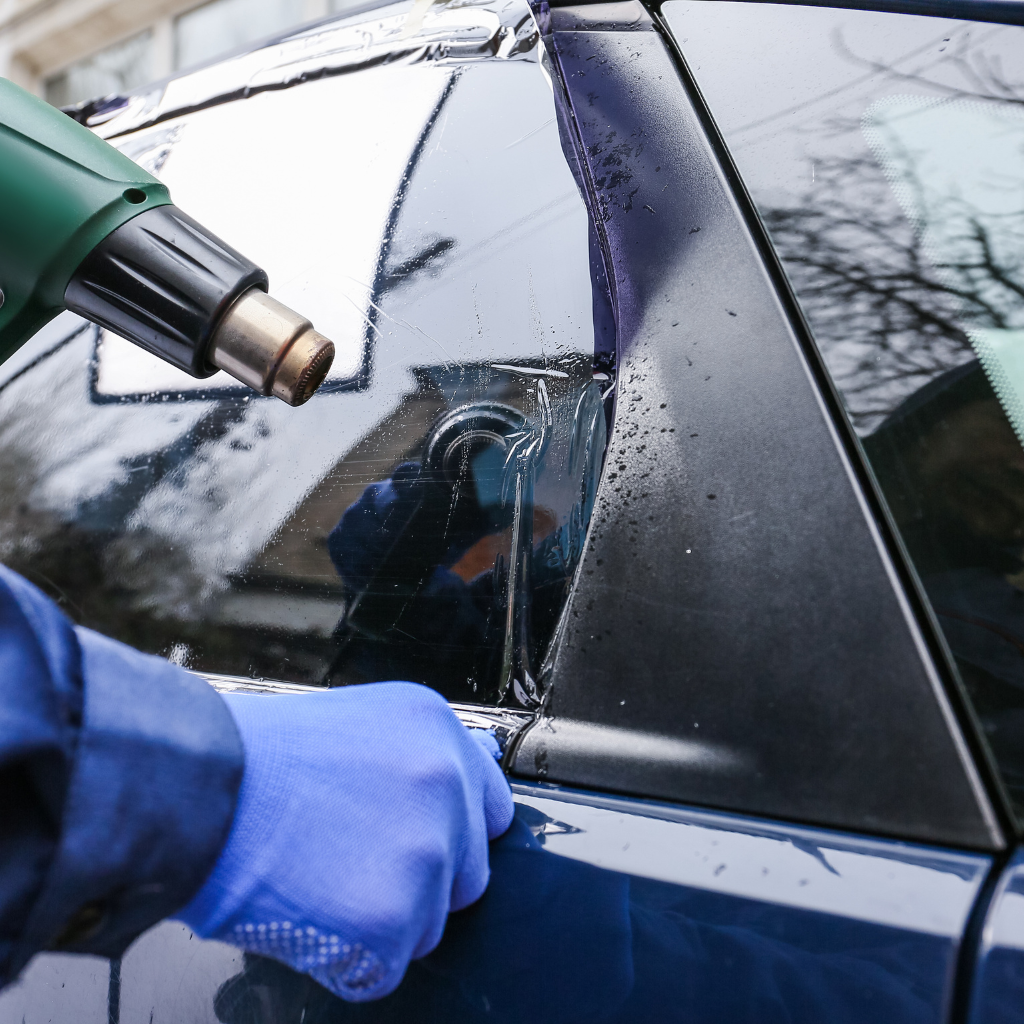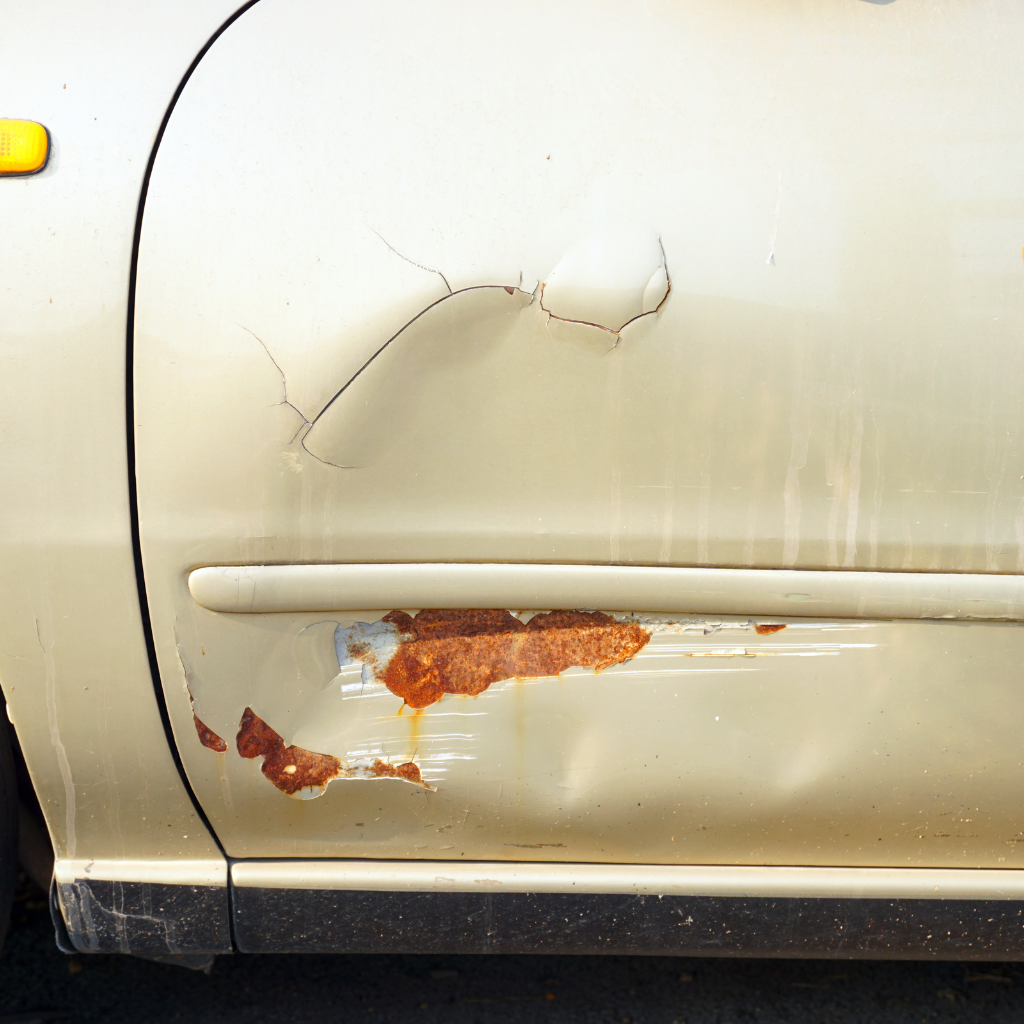To prevent rust on a car and keep it protected, regular washing and drying are essential to remove dirt and corrosive substances and prevent moisture accumulation. Applying car wax forms a barrier against moisture and contaminants, while the use of paint protection film and breathable car covers can further shield the vehicle. Regular inspections for early signs of rust, especially on the underside and exposed areas, are vital. Ensuring the continuation of these practices will greatly extend the lifespan and aesthetics of the vehicle.
Key Takeaways
- Wash your car bi-weekly and dry thoroughly to remove corrosive substances and moisture.
- Apply car wax regularly to create a moisture-resistant barrier.
- Use a breathable, water-resistant car cover to protect against environmental moisture and contaminants.
- Implement rust inhibitors and consider professional rust-proofing services for enhanced protection.
- Store your vehicle in a garage and promptly repair any scratches or dents to minimize rust risk.
How to Prevent Rust on Car?
Preventing rust on a car requires meticulous attention to maintenance practices that inhibit corrosion.
Regular washing removes corrosive substances such as road salts and pollutants, which, if left unchecked, accelerate the oxidation process on metal surfaces.
Additionally, the application of car wax creates a protective barrier that not only enhances the vehicle’s aesthetic appeal but also shields the paint and underlying metal from moisture, a primary catalyst in rust formation.
Why Regular Car Wash is Essential
Regular car washes are essential in combating the formation of rust on vehicles. Washing your car regularly helps to keep the car clean and removes harmful substances like road salts and chemicals that can accelerate the corrosion process. Moisture, trapped on the vehicle’s exterior, if not washed away promptly, interacts with oxygen and metallic components, leading to rust. By keeping the car’s surface clean and dry, you effectively prevent rust from forming. Ensuring that you wash and dry your car regularly is a proactive step in maintaining the integrity of your vehicle.
| Benefit | Description | Frequency |
|---|---|---|
| Prevents Rust | Removes elements that cause corrosion | Bi-weekly |
| Maintains Appearance | Keeps the vehicle looking new | Weekly |
| Protects Investment | Preserves vehicle’s exterior, enhancing longevity | After exposure |
| Saves Money | Reduces long-term repair costs | As needed |
Using Car Wax for Rust Prevention
Applying car wax plays an essential role in rust prevention by providing a protective barrier on the vehicle’s surface.
Car wax, especially the best car wax formulations, incorporates advanced protective coatings that adhere to the paintwork, enhancing the underlying clear coat. This layer effectively shields the metal from environmental contaminants that contribute to corrosion.
By waxing your car regularly, you establish a resilient protective layer that not only guards against scratches but also mitigates the oxidative reactions that lead to rust.
Additionally, some waxes integrate elements of paint protection film, offering a more robust defense against the elements.
Maintaining this routine, along with periodic paint correction, preserves the integrity of the paintwork and clear coat, which are critical in preventing rust and extending the vehicle’s lifespan.
Importance of Keeping Your Car Dry
While waxing provides a protective barrier against rust, guaranteeing that your car remains dry is equally essential in rust prevention. Moisture is a primary catalyst for the oxidation process where rust forms. Keeping your car dry inhibits this moisture accumulation, which is vital for protecting the car’s paint and underlying metal.
Utilizing a car cover, especially when parked outdoors, can considerably shield the car body from rain, snow, and ambient moisture, thereby aiding rust prevention and regularly drying your car after washing preventing surface rust from developing. The practice of thoroughly drying areas prone to water collection, such as crevices and undercarriages, guarantees these parts remain rust-free.
This proactive approach to moisture management is fundamental in extending the longevity and aesthetic appeal of your vehicle.

Does Ceramic Coating Prevent Rust?
Ceramic coatings are advanced chemical polymer solutions that bond with a vehicle’s paint at a molecular level, providing a robust layer of protection.
This layer greatly enhances the car’s resistance to various environmental pollutants, potentially reducing the risk of rust formation.
However, it is critical to assess both the advantages and limitations of ceramic coatings and compare them with traditional car wax to determine their efficacy in rust prevention.
Understanding the Role of Ceramic Coating
Protecting a vehicle’s exterior from environmental threats often involves the application of various protective coatings, among which ceramic coatings have gained popularity for their durability and high level of protection. Ceramic coating, or nano ceramic coating, forms a chemical bond with the car paint, creating a robust layer of protection that repels water and resists UV rays and other contaminants that can lead to rust formation. By preventing water and oxygen from reaching the metal surfaces, it indirectly helps in rust prevention, although it does not interact with iron oxide directly.
| Feature | Benefit | Relevance to Rust Protection |
|---|---|---|
| Water Repulsion | Limits moisture contact with metal | High |
| UV Resistance | Protects paint, reducing paint degradation | Medium |
| Chemical Resistance | Prevents acidic contaminants damage | Medium |
| Durability | Long-lasting protection layer | Medium |
This approach provides an extra layer of safety to keep the vehicle in pristine condition.
Pros and Cons of Ceramic Coatings
Although ceramic coatings offer substantial benefits in protecting a vehicle’s exterior, they also present certain limitations, particularly in the context of rust prevention.
Ceramic coatings primarily serve as a hydrophobic layer that safeguards the paint, but their efficacy in directly preventing rust on car metal is less pronounced. These coatings create a barrier that helps protect against environmental contaminants, thereby reducing the risk of corrosion indirectly.
However, if the vehicle’s metal is already compromised or exposed, ceramic coating alone may not suffice to prevent rust. Car owners should consider that while ceramic provides robust protection against elements that can degrade the paint, additional treatments might be necessary to shield the underlying metal from rust fully.
Comparing Ceramic Coating with Car Wax
Several automotive enthusiasts debate the merits of ceramic coatings versus traditional car waxes, especially regarding rust prevention capabilities.
Ceramic coating, a liquid polymer, chemically bonds with the vehicle’s paint, creating a robust layer of protection against various elements, including minor abrasions and paint chips that could expose metal to oxidation and rust.
In contrast, car wax, primarily composed of natural waxes and polymers, provides a less durable barrier that needs frequent reapplication to effectively prevent rust from spreading.
While neither method can fully remove surface rust once present, they both serve as preventive measures by sealing the paint and reducing moisture penetration.
Ultimately, ceramic coating is often seen as a more effective way to prevent rust; though more costly, it offers longer-lasting protection.
What are the Causes of Rust on Cars?
Understanding the causes of rust in cars is pivotal for effective prevention.
Road salt and moisture accelerate the corrosion process, initiating surface rust that can quickly become widespread under conducive conditions.
Additionally, mechanical damage such as scratches breaches protective coatings, exposing the underlying metal to oxidizing elements that promote both surface and penetrating rust.
The Impact of Road Salt and Moisture on Surface Rust
The presence of road salt and moisture greatly accelerates the formation of surface rust on vehicles. Road salt, commonly used to melt snow and ice on roads, clings to car body panels and, when combined with moisture, induces oxidation of the metal underneath. This chemical reaction is pivotal in rust formation, compromising the structural integrity of the vehicle. To prevent rust, it is essential to regularly wash and treat these areas to keep rust at bay.
| Factor | Effect on Car | Prevention Method |
|---|---|---|
| Road Salt | Accelerates oxidation | Frequent washing |
| Moisture | Initiates rust process | Waterproof coatings |
| Car Body Panels | Prone to rust | Regular inspections |
How Scratches Lead to Rust Formation and Penetrating Rust
While seemingly minor, scratches on a car’s surface can greatly escalate the risk of rust formation, particularly penetrating rust. Scratches expose the underlying metal, stripping it of its protective coatings such as paint and clear coat, which are essential to keeping the vehicle rustproof.
Once exposed, the bare metal interacts with moisture and oxygen, a prime environment where rust develops. Over time, if not addressed, these initial signs of developing rust can evolve, causing penetrating rust that compromises the structural integrity of the metal.
Regular inspections to identify and remove rust and repair scratches are vital in preventing the formation of rust. Understanding these causes of rust helps maintain the vehicle’s longevity and aesthetic appeal.

Understanding Rust Formation Processes
Although many car owners may overlook the importance of environmental factors, these elements are essential in the rust formation process on vehicles.
Rust formation processes begin when iron in the car’s metal combines with oxygen in the presence of water, a reaction known as oxidation. This interaction is accelerated by various contaminants, such as salt and industrial pollutants, which can break down the protective coatings on the surface of the car, leading to the formation of surface rust.
- Presence of Oxygen and Moisture: Essential for the chemical reaction with iron.
- Salts and Contaminants: Speed up corrosion, especially in colder climates where road salt is common.
- Damage to Protective Coatings: Exposes metal surfaces to environmental factors.
- Neglect in Routine Maintenance: Fails to remove harmful residues and apply rust inhibitors, increasing vulnerability.
To avoid rust, car manufacturers and owners must be vigilant in applying rust inhibitors and adhering to rust prevention tips.
How Can Car Owners Protect Their Cars with Paint Protection Film?
Paint protection film serves as a robust defense against environmental elements that lead to rust formation in cars.
Implementing car covers and routine detailing are critical practices that complement the film’s defense by mitigating moisture accumulation and abrasive contaminants.
Additionally, storing vehicles in a garage shields them from harsh weather conditions, further enhancing the protective measures against rust.
Using Car Covers as a Defense Against Rust
Car covers serve as an effective barrier against the corrosive impact of moisture, dust, and environmental contaminants that can lead to rust formation on vehicles.
Keeping your car covered with a high-quality car cover shields the body of the car from the elements, which are primary catalysts for rust.
- Material Choice: Select covers made from breathable, water-resistant fabrics to prevent moisture accumulation.
- Proper Fit: Confirm the cover fits snugly to minimize exposure to elements and reduce the abrasive action of wind.
- Regular Usage: Consistently using a car cover can greatly reduce the risk of rust, especially for cars vulnerable to rust.
- Maintenance: Regularly clean both the car and the cover to stop rust from spreading and maintain effectiveness.
Best Practices for Car Detailing to Prevent Scale Rust
While car covers offer surface protection, another effective method of safeguarding a vehicle against rust is the application of paint protection film.
This film acts as a barrier against the elements and reduces the risk of scale rust, particularly on body panels and wheel wells—common areas for rust accumulation.
Professional car detailing services incorporate this film as part of their strategy to prevent rust. They apply the film meticulously, ensuring it adheres without bubbles or gaps where moisture and grime could penetrate.
Special emphasis is placed on areas requiring extra attention, such as edges and seams that are more prone to contact with corrosive substances.
Regularly scheduled detailing helps maintain the integrity of the film and extends the vehicle’s protection against rust.
Why Storing Your Car in a Garage Matters
Storing a vehicle in a garage greatly contributes to the prevention of rust, particularly when combined with the application of paint protection film.
Sheltering a car in a garage shields it from environmental factors that lead to rust formation. This controlled environment is key to preventing rust, especially when vehicles are parked for long periods.
- Environmental Shield: A garage acts as a barrier against rain, snow, and humidity, all of which can accelerate rusting.
- Consistent Conditions: Stable temperatures in garages help avoid the dew point on metal surfaces, reducing condensation—a precursor to rust.
- Cleanliness: Ability to regularly clean the car and wash off pollutants that might cling to the car’s body.
- Routine Maintenance: Facilitates regular checks and dryings of susceptible areas of your car, ensuring early detection and management of moisture.
What are the Best Rust Prevention Tips for Your Car Regularly?
To effectively mitigate corrosion, vehicle owners should first focus on identifying and promptly treating any rust spots that appear.
The strategic application of rust inhibitors can serve as a critical measure for rust-proofing, thereby enhancing the vehicle’s resistance to oxidative damage.
Furthermore, adhering to a schedule of regular car maintenance not only preserves the mechanical integrity but also plays a pivotal role in the longevity of the vehicle by preventing rust formation.
Identifying and Treating Rust Spots
Identifying and treating rust spots early is essential for maintaining the integrity of a vehicle’s bodywork. Spotting the early signs of rust on parts of the car allows for timely intervention to prevent rust on the car from spreading.
The best way to stop rust includes a combination of regular inspections and prompt treatment of small rust spots.
- Regular Inspection: Check commonly affected areas to catch rust early.
- Surface Cleaning: Keep the vehicle’s body clean and free of substances that can trap moisture.
- Prompt Repair: Address small rust spots immediately to prevent expansion.
- Protective Coatings: Apply sealants on exposed metal parts to prevent direct exposure to elements that accelerate rusting.
Effective Use of Rust Inhibitors for Rust Proofing
While addressing surface-level rust spots is vital, integrating the use of rust inhibitors can greatly enhance a vehicle’s resistance to corrosion.
Rust inhibitors are chemical compounds applied to the metal surfaces of a car, particularly the underside of the car, which is a major catalyst for rust. These inhibitors work by forming a protective barrier that prevents the chemical interaction between metal and environmental elements that leads to rust formation.
For protecting older cars, the effective use of rust inhibitors is essential. Regular applications as part of car maintenance services can considerably prevent rust on a car and keep it protected.
Such practices guarantee that the vehicle retains structural integrity and aesthetic appeal, thereby extending its serviceable life.
Regular Car Maintenance for Longevity
Regular car maintenance is essential for enhancing vehicle longevity and preventing rust. As vehicles age, they are more prone to rust, especially without proper maintenance.
Here are key strategies to prevent rust:
- Regular Inspections: Frequently assess the underside of your car for any signs of rust or damage. Older cars are particularly prone to rust, making thorough inspections vital.
- Prompt Repair of Dents and Scratches: Any breach in the paint can expose metal, making it vulnerable to rust. Immediate repair can prevent this.
- Protection Services: Utilize professional rust-proofing and undercoating services to safeguard the undercarriage of your vehicle.
- Controlled Environment: Store your vehicle in a controlled environment to minimize exposure to moisture and salt, which accelerate the rusting process.
Conclusion
In summary, safeguarding a vehicle from rust necessitates a multifaceted approach that includes both proactive and preventive strategies. Utilizing ceramic coatings and paint protection films provides substantial barriers against corrosion. Additionally, understanding the primary causes of rust and implementing regular maintenance tips are essential for long-term protection. Car owners must remain vigilant, employing a combination of protective measures and regular inspections to guarantee their vehicles remain in pristine condition, free from the detrimental effects of rust.






